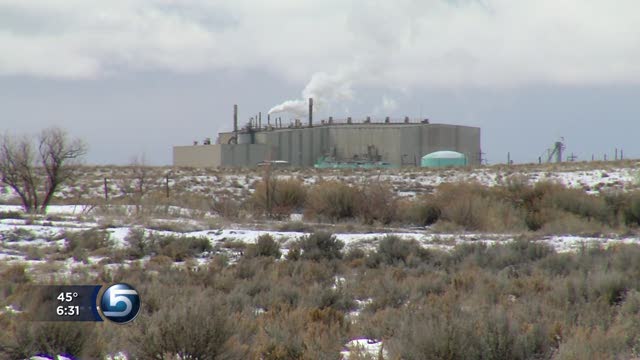Estimated read time: 2-3 minutes
This archived news story is available only for your personal, non-commercial use. Information in the story may be outdated or superseded by additional information. Reading or replaying the story in its archived form does not constitute a republication of the story.
SAN JUAN COUNTY -- A new government study has found radioactive contamination just off-site from a controversial uranium mill. But it may not be serious enough to bolster the arguments of the plant's critics.
White Mesa is the nation's only active uranium mill, and is currently undergoing re-licensing by the state. The Ute Mountain Ute tribe asked for an independent federal study, apparently because they didn't trust the company or state regulators. But the study gives the tribe very little fresh ammunition.
The closest homes are over a mile away, and those neighbors showed only a mild concern about the mill. "Yeah, it's a concern," Preston Hawkins. "But it ain't a big worry."
The Ute tribe has battled the plant for years, insisting it poses a serious health threat on the reservation three miles away. In a new study, federal scientists sampled dirt, sagebrush and springs. They found some radioactive hits just outside the plant boundary, the chemical fingerprints of uranium ore.
"And all of those fingerprints were high," said Dave Naftz with the U.S. Geological Survey.
Naftz says it's probably windblown dust from trucks or the plant site itself.
"It looks like it's coming from uncovered ore storage pads, where they store the ore before it's processed at the mill site," he said.
But the contamination is mild and reaches at most a third of a mile from the site, and preventing more contamination shouldn't be too hard, according to Naftz.
"I think with a few simple steps the plant can remediate any contamination that we found," he said.
Company officials refused KSL access to the property and they would not comment on the study. It is not known if they agree with its conclusions or whether they plan to do anything about it.
The Utes contend that leaks in the mill's disposal cells are a health threat. They point to previous studies showing nitrate and chloroform in groundwater. State regulators say that came from an old laboratory drain system, not disposal cells, and they believe there is no ongoing leak.
The new study sheds little new light on that controversy. One spring did show elevated radiation, but scientists believe that resulted from windblown dust, not leaks. Still, the study was limited.
"The objective of this study was not to do any kind of health implication," Naftz said. "It was just to see if we found evidence of off-site migration. But, if that was a populated area, that could potentially be of concern."








